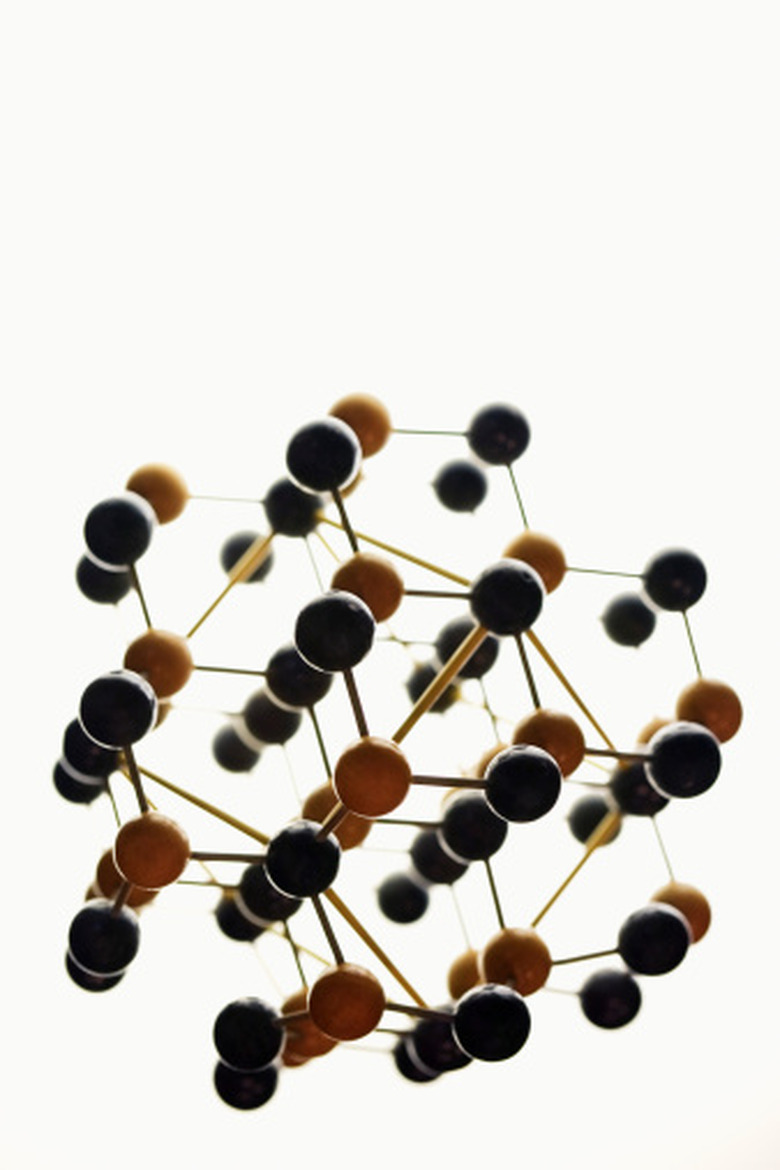How To Tell If An Atom Is Polar Or Non-Polar?
In covalent bonds within molecules, the individual atoms contained share electrons to make the molecule stable. Oftentimes, these bonds result in one of the atoms, which has a stronger attractive force than the others, bringing the electrons toward itself and therefore giving that atom a negative charge. In such a molecule, the atoms from which the electron is pulled have a positive charge. Molecules bonded in such a way are called polar molecules, while those which don't have a charge are called non-polar. Determining if an atom is polar or non-polar requires understanding the bonds.
Step 1
Determine if the bonds in the molecule are covalent or ionic. Ionic bonds occur between ions, atoms which have become either negatively or positively charged when their number of electrons are no longer equal to their number of protons. Atoms in such bonds can be considered polar, but only atoms in covalent bonds can be polar. Generally, ionic bonds appear between metallic atoms, while covalent bonds appear more often in liquids and gases. If the bonds are ionic, the atoms can't be considered polar or non-polar.
Step 2
Examine each of the atomic elements contained within the molecule. Generally, bonds between two of the same atoms, such as nitrogen (N2) or oxygen (O2) have an even distribution of electrons, making the atoms non-polar. Other molecules that use more than two of the same atom, such as ozone (O3), are also non-polar. Polar atoms occur when different atoms are bonded within the molecule, such as carbon dioxide (CO2) and water (H2O), where the pull of certain atoms cause the electron distribution to become unequal. If the molecule has more than one element contained, then the atoms are polar.
Step 3
Examine the structure of the molecule to see if the molecule itself is polar or non-polar. If the polar atoms within the molecule even each other out by being symmetrical, then the molecule itself is considered non-polar even though the atoms within the molecule are polar. Asymmetrical molecules, such as water, are characteristic of polar molecules, as the total charge of the molecule is uneven due to the electron distribution between the atoms.
Cite This Article
MLA
Kroll, Jess. "How To Tell If An Atom Is Polar Or Non-Polar?" sciencing.com, https://www.sciencing.com/tell-atom-polar-nonpolar-8543846/. 24 April 2017.
APA
Kroll, Jess. (2017, April 24). How To Tell If An Atom Is Polar Or Non-Polar?. sciencing.com. Retrieved from https://www.sciencing.com/tell-atom-polar-nonpolar-8543846/
Chicago
Kroll, Jess. How To Tell If An Atom Is Polar Or Non-Polar? last modified March 24, 2022. https://www.sciencing.com/tell-atom-polar-nonpolar-8543846/
